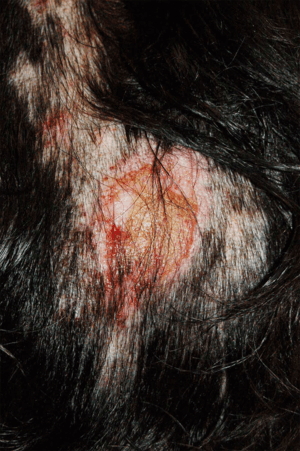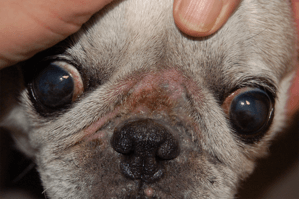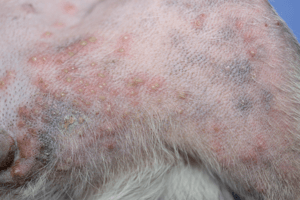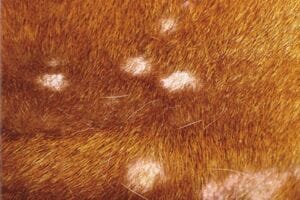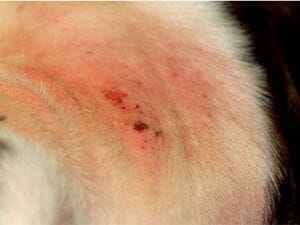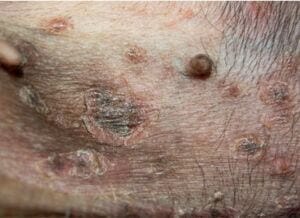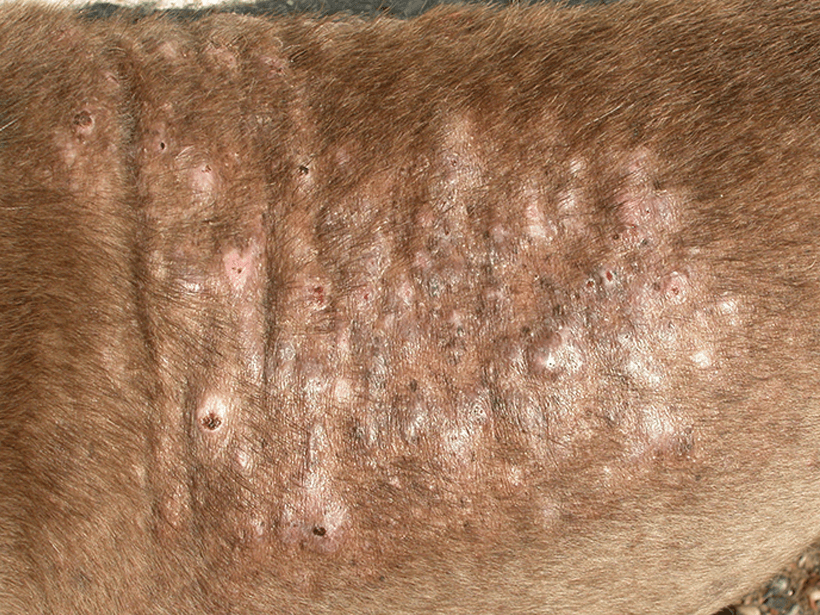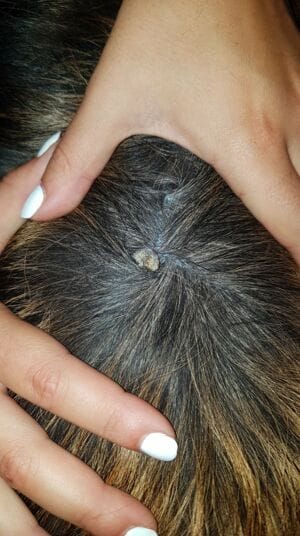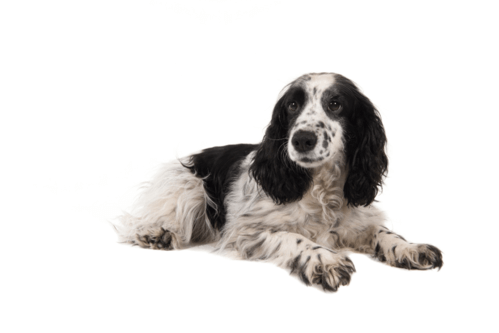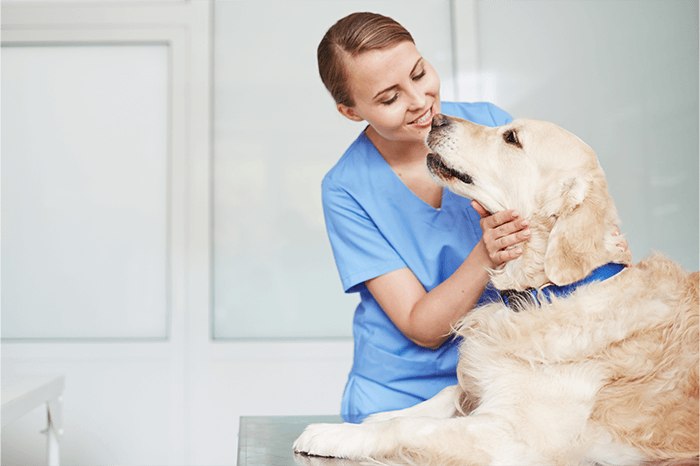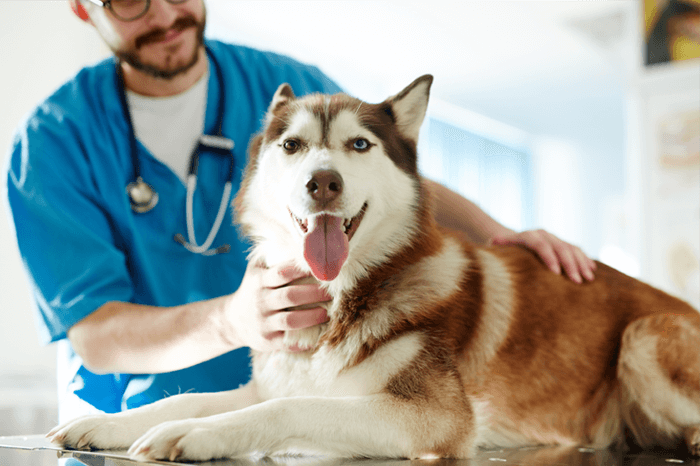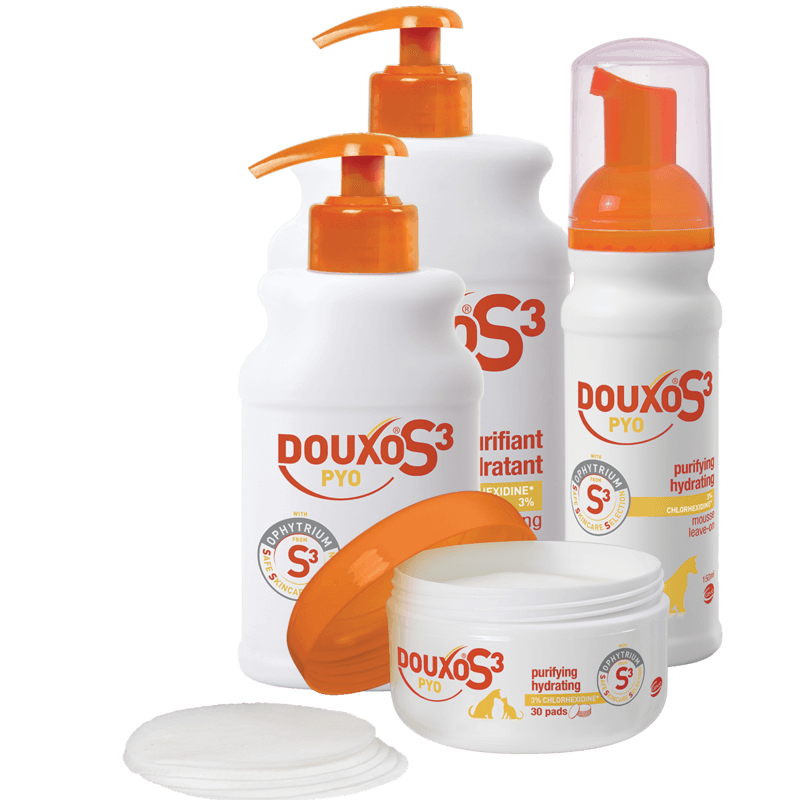Bacterial skin infection in dogs: pyodermas – a common condition
Marina G VeterinarianBacterial skin infections are really common in dogs but occur secondarily to another disorder. Treat the infection and the cause will avoid relapses.
Bacterial skin infections in dogs are common and often a secondary problem that results from some other condition - for example, allergic skin disease. Whatever the underlying condition though, these infections need treatment, as they are uncomfortable, painful, and frequently spread outwards along the skin, and inwards through it.
What are the signs of bacterial skin infections in dogs?
Depending on the site and extent of infection, skin infections can show up in a number of different ways. Collectively, however, we refer to these as, from the less deep to the deepest:
- Surface pyoderma, very superficial
- Superficial pyoderma
- Deep pyoderma
Surface pyoderma
Surface pyoderma affects only the top-most layers of the skin. It typically causes redness, soreness, and itching of the skin, and sometimes has a “greasy” or oily appearance due to the oozing of infectious fluid from within the skin. This is most commonly seen in skin folds or moister areas of the body. The most common forms of surface pyoderma are hot spots, which often develop due to self-trauma, often triggered from an allergy, parasites etc., and skin fold dermatitis (intertrigo), which develops due to friction between two skin surfaces (common in dogs with prominent skin folds). Bacterial overgrowth is common in areas with poor air ventilation such as feet, skin folds, etc.
Superficial pyoderma
Superficial pyoderma is deeper into the skin, and as well as the redness and itching, we often see infection within the hair follicles (called folliculitis), papules, pustules, crusts, localised hair loss (alopecia), and more significant pain and discomfort. We also typically see “epidermal collarettes” where the superficial layers of the skin peel back, due to the bacterial burden within the epidermis with darkened skin. Superficial pyoderma can be seen anywhere on the body.
Folliculitis is a particular form of superficial pyoderma where the infection is concentrated in and around the hair follicles (hence the name!). Bacterial folliculitis in the dog is quite common and is characterised by pustules: whiteheads around the hair follicles. The follicle is usually surrounded by a red and swollen area. As well as being very painful, especially when the affected hairs are touched or moved, the larger pustules can rupture leaving open wounds and, later, scars.
Deep pyoderma
Deep pyoderma, as the name suggests, occurs once the infection has penetrated deep into the skin and sometimes into the deeper tissues underneath. We may see bumps, often open draining tracts and fissures in the skin, often oozing pus or other matter You can also observe erosions, ulcerative areas These lesions are often itchy, and even painful.
In addition to the common Staphylococci, deep pyoderma is frequently complicated by other bacterial species, often those such as Pseudomonas, E. coli or Proteus which are harder to treat.
Dog follicular cysts
Follicular cysts are a quite common occurrence in the dog’s skin; however, it is important to differentiate a true cyst from something more concerning such as a sign of pyoderma (such as an infected follicle) or a tumour. A true follicular cyst is simply a plugged hair follicle, filled with sebum (oil) or hair material. While cysts can be caused by trauma, they aren’t commonly secondary to infections. In most cases, they appear as single “lumps” in the skin, and although veterinary attention to confirm the diagnosis is important, they don’t usually require aggressive treatment. Nonetheless they can become secondarily infected. Similar to follicular cysts are dilated pores and blackheads (known as comedones), but these have wide openings at the surface.
In the rare case of disseminated follicular cysts, where cysts appear all over the body, it can be much harder to determine whether or not this is part of a skin infection. This condition also needs more aggressive veterinary treatment.
What causes skin infections in dogs?
Dog skin infection causes are many and varied, let’s discuss the bacteria causing it and the main causes of infections.
The natural bacteria on dogs’ skin; skin dysbiosis and skin infections
A wide range of bacterial species are naturally present on the dog’s skin. However, if the skin health is compromised in any way, some opportunistic bacteria can overgrow and cause secondary infections.
This overgrowth is sometimes called “Skin Dysbiosis”, and this imbalance between bacteria is the real cause of Staph infection in dogs. The bacteria were there before the infection and will still be there after it’s treated: but if they’re kept in check by other more friendly species, they don’t cause a problem.
The most clinically important Staphylococcus in dogs is Staphylococcus pseudintermedius, a species which seems to be particularly prone to overgrowth if the skin flora (i.e., all the other bacteria) is disrupted, and is responsible for around 75% of pyodermas. Whatever the cause of this disruption, it tends to result in clinical disease more commonly than other bacterial species. In comparison, Escherichia coli (E. coli) and Pseudomonas aeruginosa (P. aeruginosa) account for around 10-20% of cases each. Infection with Staph in dogs, however, can also involve a wider range of species, including Staphylococcus aureus, even if it is quite uncommon. Sadly, many strains are resistant to many of our antibiotics (Methicillin-Resistant Staphylococcus pseudintermedius MRSP, and Methicillin-Resistant Staphylococcus aureus MRSA) - due to selection and dissemination of resistant bacteria linked to massive use of antibiotics in human and veterinary medicine.
Underlying conditions to skin infections
Bacterial skin infections can often develop due to an underlying condition that causes the skin to become more fragile. All skin conditions, many immunologic or metabolic abnormalities can lead to secondary skin infection. An example of this would be in a dog that suffers from allergic skin disease; allergic skin disease, regardless of what the dog is allergic to, is incredibly itchy that can lead to skin trauma and thus infection. In addition, their skin microbiota is modified and more prone to let bad bacteria overgrow. Certain breeds may be more susceptible to bacterial infections as they are predisposed to certain underlying conditions, for example in the case of breeds predisposed to developing allergies, Labrador Retrievers, Shar Peis, Boxers and Boston Terriers are amongst the breeds more likely to be affected.
Is dog bacterial skin infection contagious?
Almost never! Staph and other skin infections in dogs are usually the result of a disruption in that natural microbial barrier and involve the same bacteria as are present on every dog’s skin. So, in most cases, there is no risk of it being passed from dog to dog. Risk of transmission of Staph from a dog to a human is even less likely if good hand hygiene after treating or touching the affected areas. Nonetheless there are some cases where such a transmission is possible, in particular in case of a person with a compromised immune system (baby, older people, person receiving chemotherapy, etc.). A thorough hand washing lower the risk of transmission.
It’s important to remember, though, that even though the bacteria are similar, the possibility of the transmission of genes for antibiotic resistance is real.
How is a bacterial skin infection diagnosed?
Vets will perform a clinical examination and may also need to conduct further diagnostic tests in-house to confirm a bacterial infection and initial treatment (based on the shape of the bacteria and probabilities). As the infection is often secondary, after resolution, the vet may need further investigation to rule out underlying conditions. Depending on the case, swabs for culture can be taken and sent to a lab for growth and analysis, to determine what antibiotics are the most appropriate (if needed).
Dog bacterial skin infection treatment
When deciding how to treat dog skin infections, there are four key components your vet will want to consider.
Suppress bacterial growth on, into and below the skin
The skin provides the reservoir of bacteria which are causing the problem. Therefore, suppressing growth - especially of the pathogenic or disease-causing organisms - is important. Approach will depend on the depth of the infection. Common approaches involve the use of antiseptic agents such as chlorhexidine digluconate (as in DOUXO® S3 PYO), except for deep pyodermas. An initial shampoo allows to remove bacteria, crusts, etc. while subsequent use of the mousse allow the ingredient a longer direct skin contact for an optimal performance. For more localised cases, Pads allows to bring antiseptic ingredients only where necessary. By knocking down the bacterial population, we create a “breathing space” for healing to occur.
In case of deep pyoderma or refractory cases, vets will usually have to prescribe antibiotic medications. In most cases, these will have to be a long course – generally at least 3-4 weeks for refractory pyoderma and as long as 10 weeks for deep pyoderma. It is therefore essential that the most appropriate antibiotic is chosen, based on cultures, to reduce the further development of resistance, and to effectively treat resistant bacteria (such as MRSA or MRSP).
Relieve the pain, itching and inflammation
In many cases, self-trauma or self-injury is an important part of the problem, due to the pain, itchiness and discomfort of the infection. Products containing Ophytrium such as DOUXO® S3 PYO (to combine with beneficial effects of chlorhexidine against germs) are beneficial to soothe the itchy skin and reduce irritations.
Restore the natural skin barriers
In case of such disorders, bacteria have damaged or overcome the microbial and mechanical barriers. Reinforcing and restoring these are an important part of treatment. Knocking down the bacteria on the surface is a good start, but substances like Ophytrium (included in the DOUXO® S3 PYO formulation) can simultaneously strengthen the mechanical barrier, reinforce the chlorhexidine action by reducing adhesion and biofilm formations of Staphylococcus aureus and Staph pseudintermedius while respecting the natural skin microbiota.
Treat or manage any underlying causes
Skin dysbiosis rarely occurs on its own out of the blue - there is usually a trigger cause, if not an underlying disease process. Identifying that and managing or eliminating it is essential if repeat infections are to be avoided once treatment has finished!
What is the prognosis and is it possible to prevent?
The prognosis for bacterial skin infection is generally good, even if recovery can be long if the infection is deep. Avoidance of relapse can require long-term management of the underlying cause. If the underlying condition has been controlled, then the secondary or recurrent bacterial infections are reduced.
Prevention will depend on the cause. Long-term management of allergies, up-to-date parasiticide treatment, maintenance of a healthy coat are several measures that may prevent future flare-up.
We recommend
Our solution for skin disinfection - Antibacterial, antifungal
DOUXO® S3 PYO disinfects the skin thanks to the antiseptic action of chlorhexidine while hydrating and strengthening the skin’s ecosystem. Antibacterial and antifungal efficacy.



